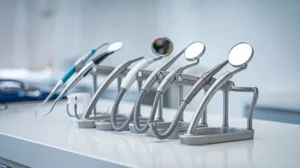
How to Choose the Best Dental Mouth Mirror for Oral Care
Picking the right dental mouth mirror might seem like a small task, but it’s actually pretty important for keeping your teeth and gums healthy. With so many options out there,
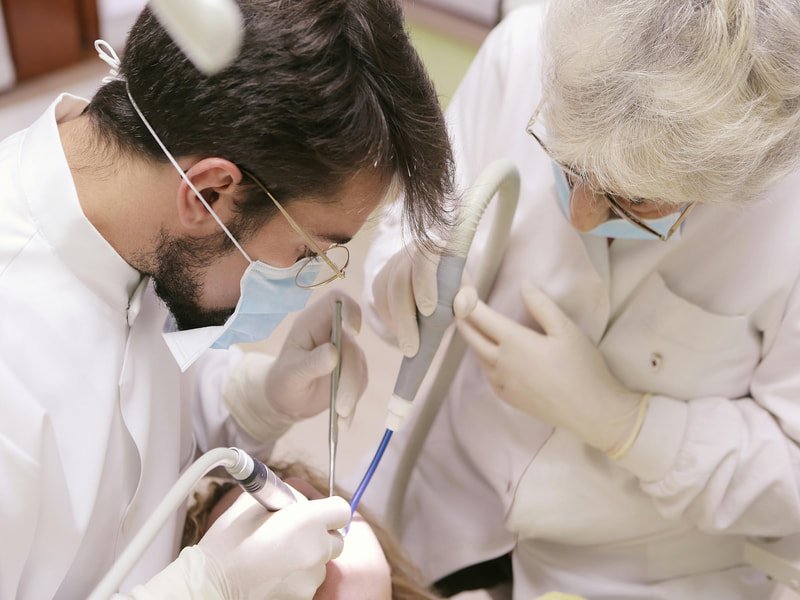
A typical dentist performs over 60,000 procedures each year. The quality of dental instrument materials plays a crucial role in practice success. Material quality should be our main focus when selecting instruments for dental practice.
Stainless Steel: The Gold Standard Stainless steel has become the preferred material for dental instruments in our profession. Medical-grade stainless steel stands out with its superior corrosion resistance. This material’s exceptional qualities come from its unique oxide layer that protects it even in harsh environments where other metals fail.
These qualities make dental instrument materials stand out:
Advanced Material Options Titanium instruments bring exciting developments to our practice. This metal provides the highest strength-to-weight ratio among all metallic elements. It works perfectly for extended procedures where instrument weight matters.
Stainless steel instruments are a green choice. Nearly 90% get recycled at the end of their lifecycle. You can choose instruments made from recycled steel without losing strength or precision.
Choose the Right Dental Instruments, High-quality materials make financial sense in the long run. Premium instruments need a bigger upfront investment. However, they need less frequent sharpening and replacement than lower-quality options. These durable tools will work effectively through rigorous and frequent use.
Precision affects patient outcomes directly in dentistry – it’s not just a preference. Our field shows how a small mistake or slip can lead to serious consequences.
Sharp instruments play a vital part in precision dentistry. Research indicates dental instruments become dull after just 15-45 scaling strokes, which affects our efficiency and patient comfort by a lot. Dull instruments force us to apply more pressure, which creates several challenges:
Sharp injury risk remains a serious concern in our profession. Recent data shows 51% of dental professionals experienced sharp injuries, and 60% of those faced multiple incidents. This reality makes meticulous instrument care essential.
Weekly instrument sharpening delivers optimal performance. Two key indicators help us assess instrument sharpness: the cutting edge should not reflect light and should have proper “bite” on the test stick. The instrument’s effectiveness depends on maintaining approximately 70 degrees during sharpening.
Smart maintenance goes beyond regular sharpening – it helps preserve our instruments’ longevity while ensuring precise, comfortable procedures for patients. Newer stainless steel instruments can keep their sharp edges for three to four months with proper care, making them a valuable investment for our practice.

Dental professionals spend about 2,000 hours yearly holding their instruments. Ergonomic design is a vital factor in daily practice. The human body isn’t built to handle static positions and repetitive movements that dentistry needs.
The Ergonomic Evolution of Instrument design has improved substantially with a focus on practitioner comfort. Research indicates that instruments with larger diameter handles and textured surfaces need the least muscle load and pinch force. Silicone-handled instruments can reduce pinch force by up to 65% and decrease tooth pressure by about 37%.
These features matter most to assess ergonomic design:
Poor ergonomics creates more problems than you might realize. Many practitioners use too much pinch force unknowingly, which leads to carpal tunnel syndrome, tendonitis, and trigger finger. Modern instruments now come with silicone grips that reduce hand fatigue and improve grip strength.
Smart Design Features Switching between tools with different handle diameters reduces strain from extended pinch gripping. New designs feature wider handles with textured surfaces that help maintain precise control while reducing muscle fatigue. The modified pen grasps technique works best to control instruments – just rest your thumb between the index and middle fingers.
The right instruments that maintain their integrity through repeated sterilization cycles play a significant role in our practice’s long-term success. The CDC recommends that dental professionals should be familiar with proper reprocessing practices for all patient-care items.
Understanding Sterilization Requirements, Our practice has shown that most dental instruments must withstand temperatures reaching 270°F during steam sterilization. New instruments need compatibility with our sterilization protocols that typically range from 6 to 30 minutes per cycle.
Our infection control system categorizes instruments into three levels:
Material Considerations Stainless steel instruments handle sterilization well, though some plastic components need extra care. Modern dental plastics provide excellent chemical resistance and FDA compliance, making them suitable for various sterilization methods. Each instrument’s material must withstand our chosen sterilization method.
Our team follows manufacturer guidelines for sterilization parameters, including temperature, pressure, and cycle duration when picking new instruments. This detailed approach helps our instruments maintain their quality and effectiveness through countless sterilization cycles and protects both our patients and our investment.
Quality sterilization goes beyond meeting regulations – it preserves our instruments’ precision and functionality while ensuring patient safety. That’s why we verify that new instruments work with our existing sterilization equipment and protocols.

Quality and reliability drive our dental practice’s choice of instruments from certified, reputable manufacturers. Our experience shows that ISO 9001 certification stands as the most accepted quality standard for dental equipment manufacturers.
These certifications matter most to us:
DAMAS certification gives a complete overview of everything in dental laboratory operations – equipment, materials, personnel, and processes. Manufacturers can track and control lot numbers for all materials used in restorations with this certification, which helps them comply with FDA registration.
Manufacturer experience tells us a lot about reliability. To name just one example, many decades-old manufacturers keep designing innovative dental products. They focus on getting better and keeping their standards high. We choose manufacturers who talk directly to dental professionals because this helps them stay up to date with practical needs and improve their designs.
Our practice runs better thanks to strong relationships with supply representatives. The best manufacturers give excellent customer service and keep their supply chains strong so we get products right when we need them. The cheapest option might look good, but we’ve learned to pick suppliers who give the best value. This means looking at their product range, brand variety, and support services.
Smart budget planning helps us manage our dental practice while delivering excellent care. Our data indicates dental supplies and PPE costs are rising faster than other expenses in practices. This makes budget planning more significant than ever.
Smart Financial Planning Successful dental practices need a good balance of current and future expenses. Setting up a complete dental office needs substantial investment. Supplies, instruments, and small equipment alone cost about $70,590. But we can save money without compromising quality through these methods:
Quality equipment gives exceptional returns in patient care and satisfaction, whether you start a new practice or upgrade an existing one. Our annual business practice reviews help us stay financially healthy and tackle rising costs.
Economical Solutions A detailed budget template tracks spending in different areas like payroll, consumable supplies, and outsourcing costs. Dental practices looking to reduce costs should check out affordable pre-sterilized instrument options that maintain quality standards.
Note that merchant service costs can vary widely – some companies charge up to 10 times more than others to process credit cards. Smart choices about these small details can substantially affect our practice’s profits while keeping patient care standards high.
Warranty coverage and support services play a significant role in dental instrument selection. Quality equipment requires substantial investment, and we need protection against issues while having access to dependable technical support.
Complete Coverage Matters Several factors come into play when evaluating dental instrument warranties:
The best manufacturers go beyond simple warranty coverage. They deliver complete support packages that include regular maintenance checks, software updates for digital equipment, and access to technical specialists who understand our specific needs.
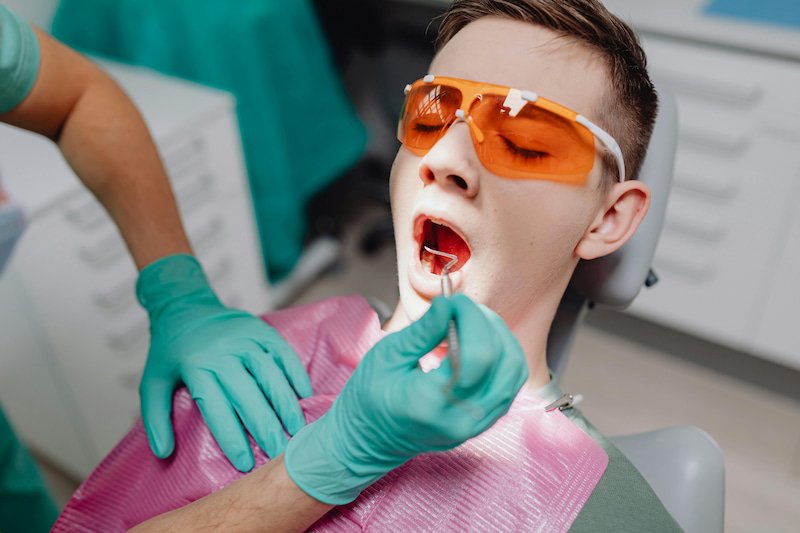
Premium support services stand out because of their responsiveness. The top manufacturers have dedicated support lines with response times under 24 hours. This gives minimal disruption to practice operations. Some manufacturers provide loaner equipment during repairs to help maintain continuous patient care.
Beyond Simple Coverage, The most valuable support packages include ongoing training and education that keeps our team current with proper instrument handling and maintenance techniques. We value manufacturers who give detailed documentation and video resources to troubleshoot common issues.
Note that extended warranties might seem costly upfront, but they pay for themselves through reduced downtime and maintenance costs. Success comes from choosing manufacturers with reliable support systems that understand a dental practice’s unique needs.
Regular testing of dental equipment will give optimal performance and patient safety. Equipment Performance Evaluations (EPEs) must be completed within 30 days after the original installation and after repairs that affect radiation output.
Our practice maintains strict testing schedules for these key categories:
Quality Control Measures Our testing protocols check tube voltage measurements during steady-state periods, and deviations from nominal values must not exceed manufacturer specification. We assess multiple technique combinations to test acceptance, including maximum, typical, and minimum exposure settings.
Darkroom quality control plays a vital role in dental film processing with new equipment. We run fog tests right after setting up new darkrooms and once every year. These tests help maintain optimal image quality and prevent degradation from unwanted light exposure.
We assess both air-driven and electric systems in high-speed instruments regularly. Electric motors can reach speeds up to 40,000 min-1, which corresponds to a bur speed of 200,000 min-1 for 1:5 contra-angle handpieces. This testing gives our instruments consistent performance levels needed for precise procedures.
Note that all testing procedures need proper documentation. Service notes should indicate if repairs affect radiation output, which helps us determine when we need additional EPEs.
Dental instrument selection depends on several key factors that affect our practice’s success. Quality materials, precise engineering, and ergonomic design are the foundations of reliable dental tools. These instruments serve us through thousands of procedures.
Our investment in premium instruments brings returns through lower maintenance costs, improved patient outcomes, and better comfort for practitioners. A manufacturer’s reputation, complete warranties, and dependable support services protect our investment and ensure consistent performance.
Regular testing and proper sterilization protocols keep our instruments working effectively throughout their lifecycle. Budget constraints might make cheaper alternatives look attractive. The focus on long-term value instead of original costs serves our practice better.
Our instruments extend our expertise. Smart choices about dental equipment let us deliver exceptional patient care while protecting our health and streamlining processes. We build a foundation for excellence that benefits both practitioners and patients through careful selection and maintenance of our dental instruments.
Here are answers to common questions about dental instruments that come up often in our practice.
G.V. Black developed the instrument formula to describe dental instruments’ dimensions and angles with precision. The three-unit formula applies to instruments with cutting edges at right angles to the blade and has these components:
A four-unit formula becomes necessary when the cutting edge sits at an angle other than 90 degrees.
Universal curettes serve as versatile instruments we use frequently in our practice. These tools work well for both supra gingival and subgingival procedures. Their design features two parallel cutting edges that meet at a rounded toe. They prove valuable, especially when you have to work on both mesial and distal surfaces without changing working ends. Barnhart, Columbia, and Younger-Good curettes stand out as prominent examples.
Our dental instruments show a significant difference between blades and nibs based on their function. Most hand instruments have three parts – handle, shank, and blade. Non-cutting instruments replace the blade with a nib. The nib’s end, called the face, becomes the working surface. This difference is vital to understand instrument design and proper usage in various dental procedures.
This section needs more details before we can create content. The previous sections cover all major topics, including conclusion and FAQs. We need:
Your input will help us create accurate and relevant content that connects well with other sections.

Picking the right dental mouth mirror might seem like a small task, but it’s actually pretty important for keeping your teeth and gums healthy. With so many options out there,
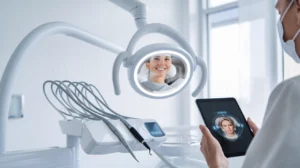
Dental mirrors have come a long way. From simple reflective tools to sophisticated gadgets, they play a key role in modern dentistry. With constant innovation in dental mirrors, these aren’t
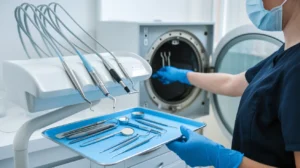
Hey there, dental pros! Today, we’re diving into something super important but often overlooked—how to properly mouth mirror sterilization. If you’re in the dental field, you know these little tools
At The Surgical Kit, we are committed to providing healthcare professionals with the finest tools to ensure precision and safety in every procedure.